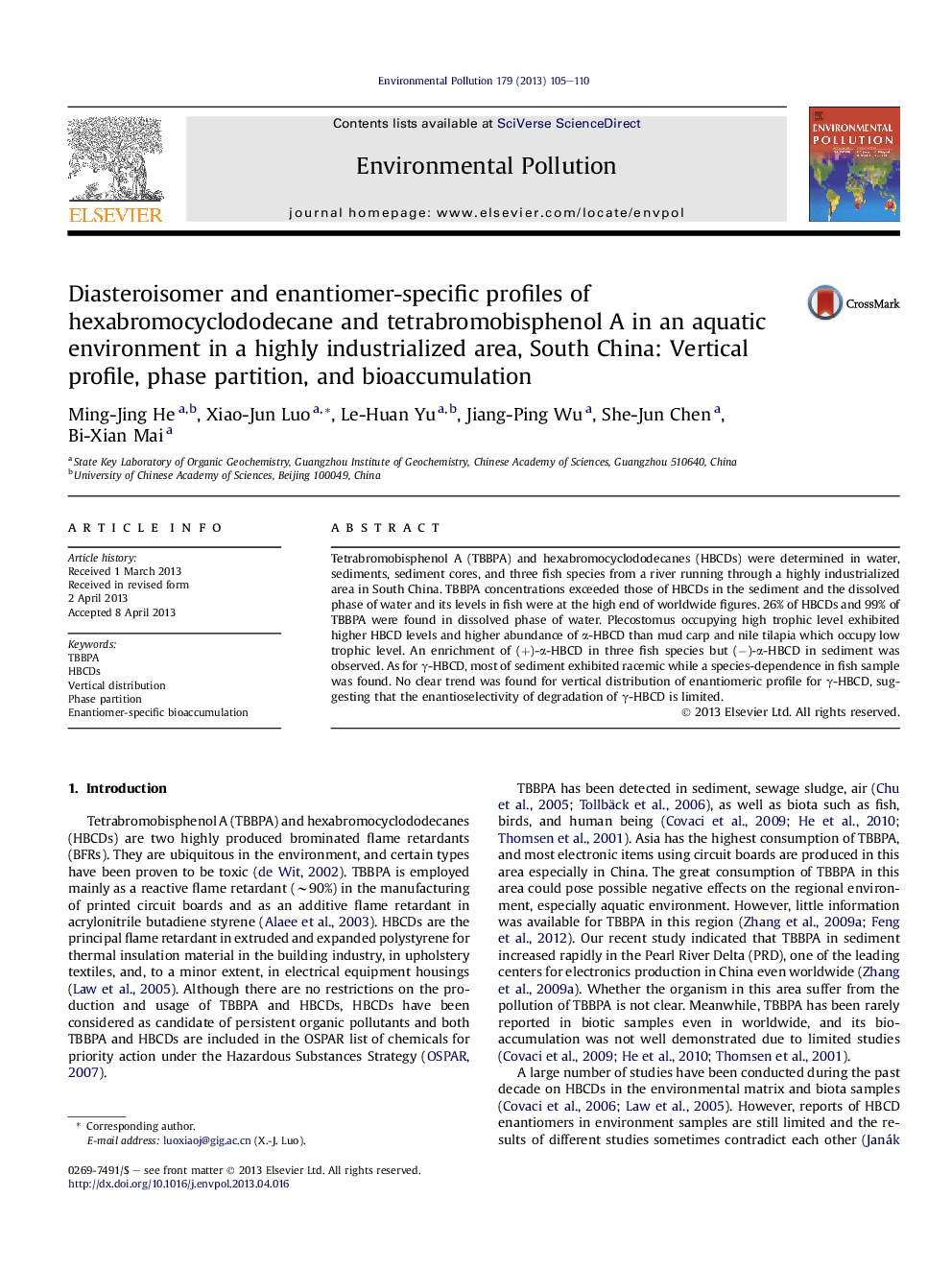| Article ID | Journal | Published Year | Pages | File Type |
|---|---|---|---|---|
| 6318730 | Environmental Pollution | 2013 | 6 Pages |
Abstract
Tetrabromobisphenol A (TBBPA) and hexabromocyclododecanes (HBCDs) were determined in water, sediments, sediment cores, and three fish species from a river running through a highly industrialized area in South China. TBBPA concentrations exceeded those of HBCDs in the sediment and the dissolved phase of water and its levels in fish were at the high end of worldwide figures. 26% of HBCDs and 99% of TBBPA were found in dissolved phase of water. Plecostomus occupying high trophic level exhibited higher HBCD levels and higher abundance of α-HBCD than mud carp and nile tilapia which occupy low trophic level. An enrichment of (+)-α-HBCD in three fish species but (â)-α-HBCD in sediment was observed. As for γ-HBCD, most of sediment exhibited racemic while a species-dependence in fish sample was found. No clear trend was found for vertical distribution of enantiomeric profile for γ-HBCD, suggesting that the enantioselectivity of degradation of γ-HBCD is limited.
Related Topics
Life Sciences
Environmental Science
Environmental Chemistry
Authors
Ming-Jing He, Xiao-Jun Luo, Le-Huan Yu, Jiang-Ping Wu, She-Jun Chen, Bi-Xian Mai,
